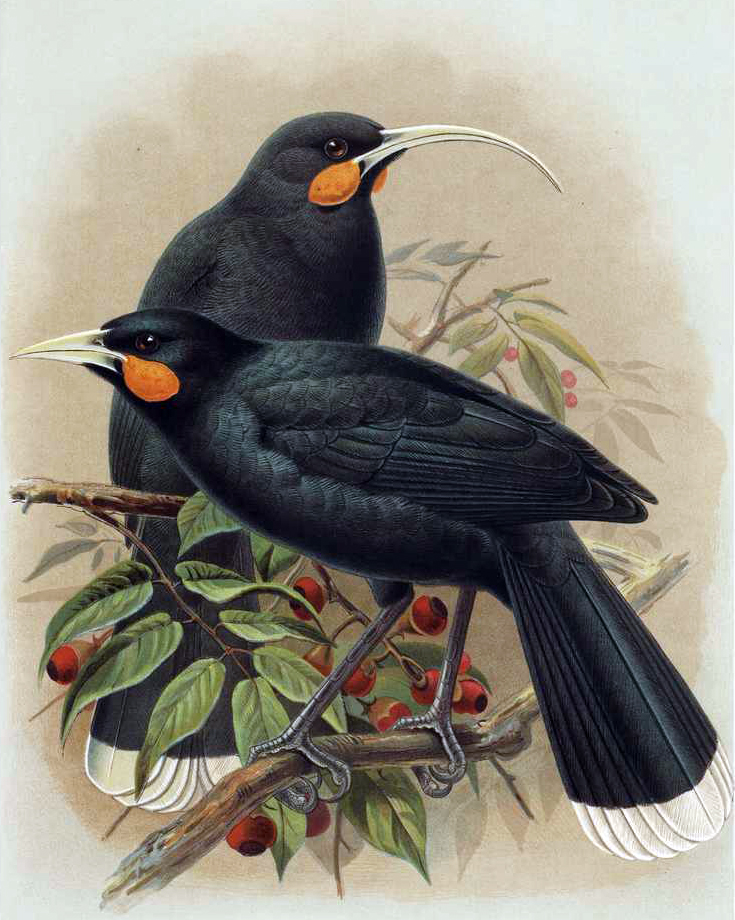
Laughing Owl (Sceloglaux albifacies)
The Laughing Owl, known to the Maori as the Whekau, was a flying bird endemic to the islands of New Zealand (two subspecies, one on the North and one on the South Island.)
The Whekau’s plumage was yellowish-brown striped with dark brown. White straps were across the tops of the shoulders/wings and occasionally the back of the neck. The wings and tail had light-brown bars. The feathers down the legs were yellowish to reddish-buff feathers. The face was white behind and below the eyes, fading to grey with brown stripes towards the center. Males were thought to be more often richly colored, and smaller than females. Average body size ranged from 14-16 inches with wing lengths around 10 inches. The birds were believed to live in open country and rocky outcrops.
Laughing Owls might have been in decline before Europeans came to New Zealand. It is believed, land use, collection of specimens, and the introduction of cats and stoats accelerated their extinction. The last recorded specimen was found dead at Bluecliffs Station in Canterbury, New Zealand on July 5, 1914.







